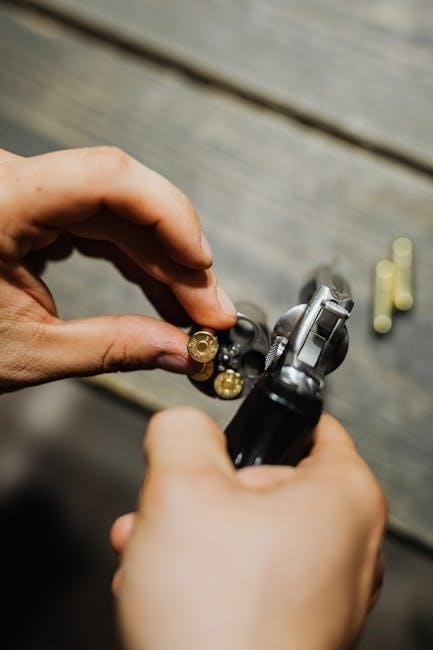Striker-fired pistols with manual safety combine modern design with added security features, offering shooters enhanced control and peace of mind in various shooting scenarios․
1․1 Historical Context and Evolution
Striker-fired pistols with manual safety have evolved from earlier firearm designs, integrating modern mechanisms for reliability and user control․ Originally developed in the late 20th century, these pistols gained popularity for their simplicity and safety features․ The manual safety adds an extra layer of control, appealing to users accustomed to traditional designs․ Over time, innovations in trigger systems and ergonomic design have enhanced their functionality, making them a preferred choice for both civilian and law enforcement use․ Their evolution reflects a balance between tradition and modernity․
1․2 Importance of Manual Safety in Modern Firearms
Manual safety in modern striker-fired pistols offers an additional layer of security, appealing to users who prioritize firearm control․ It acts as a physical barrier, preventing accidental discharge and providing confidence, especially in stressful situations․ While some argue it may be redundant due to internal safeties, others value the tactile reassurance and familiarity it provides․ This feature caters to diverse shooter preferences, making it a practical option for both novice and experienced users․
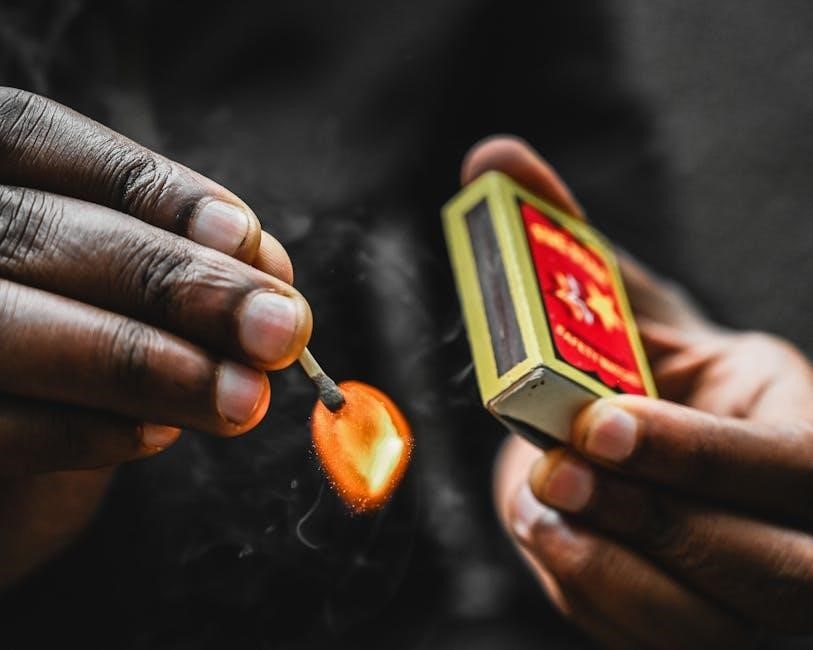
Understanding Striker-Fired Pistols
Striker-fired pistols utilize a striker mechanism instead of a hammer, offering a sleek, modern design with reduced weight and complexity․ They often feature internal safeties and, in some models, manual safeties for added control․
2․1 Definition and Mechanism
A striker-fired pistol operates using a spring-driven striker, replacing the traditional hammer, to ignite the cartridge․ When the trigger is pulled, it releases the pre-cocked striker, firing the weapon․ Internal safety mechanisms ensure the striker remains inert until the trigger is fully pressed, preventing accidental discharge․ Some models include a manual safety, adding an extra layer of control by physically blocking the striker’s movement, enhancing user confidence and safety․ This design balances simplicity with reliability․
2․2 Comparison with Hammer-Fired Pistols
Striker-fired pistols differ from hammer-fired models in their firing mechanism․ While hammer-fired pistols use an external hammer to strike the firing pin, striker-fired pistols rely on a spring-driven striker within the slide․ Both can incorporate manual safety features, but striker-fired designs are often slimmer and more modern․ Hammer-fired pistols may offer more tactile feedback, while striker-fired pistols provide a smoother trigger pull․ The choice between the two often comes down to personal preference, ergonomic fit, and intended use․
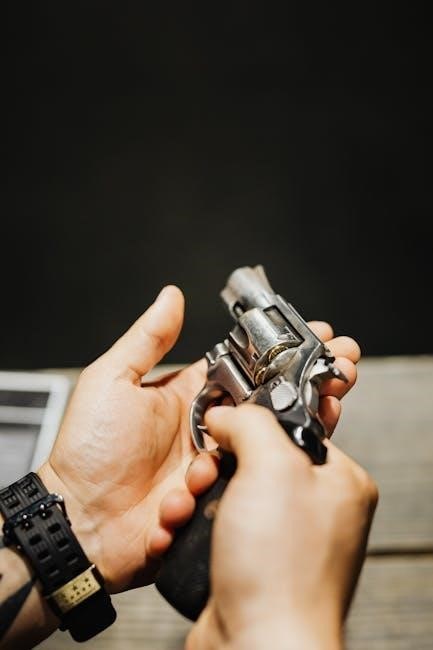
Role of Manual Safety in Striker-Fired Pistols
Manual safety adds an extra layer of control, preventing accidental discharge and offering shooters peace of mind․ It provides a physical barrier, enhancing safety in high-stress situations․
3․1 Purpose and Functionality
The manual safety on striker-fired pistols serves as an additional layer of control, preventing accidental discharge by interrupting the trigger or firing mechanism․ Its primary purpose is to enhance safety, particularly in high-stress situations, by requiring a deliberate action to disengage․ This feature provides shooters with an extra level of security, ensuring the pistol does not fire unintentionally․ While modern striker-fired pistols often rely on internal safety mechanisms, the manual safety offers a tangible, user-activated control, reinforcing safe handling practices and reducing the risk of unintended discharges․
3․2 Pros and Cons of Manual Safety
Manual safety on striker-fired pistols offers an additional control layer, providing reassurance for users who prefer a tangible safety mechanism․ It prevents accidental discharge and is particularly beneficial in high-stress scenarios․ However, critics argue that it can be a potential liability if forgotten in emergencies, and its presence may add bulk and complexity․ While some shooters value the extra security, others find it redundant given modern pistols’ internal safety systems, leading to ongoing debates about its necessity and practicality․
3․3 Importance of Manual Safety in Different Shooting Scenarios
Manual safety on striker-fired pistols is crucial in high-risk situations, providing an extra layer of control to prevent accidental discharge․ In competitive shooting, it allows for quick engagement with targets while ensuring safety when not actively firing․ For concealed carry, it offers peace of mind during holstering and retrieval, reducing the chance of unintended activation․ Additionally, in training environments, it teaches shooters discipline and situational awareness, enhancing overall firearm handling skills across various scenarios․
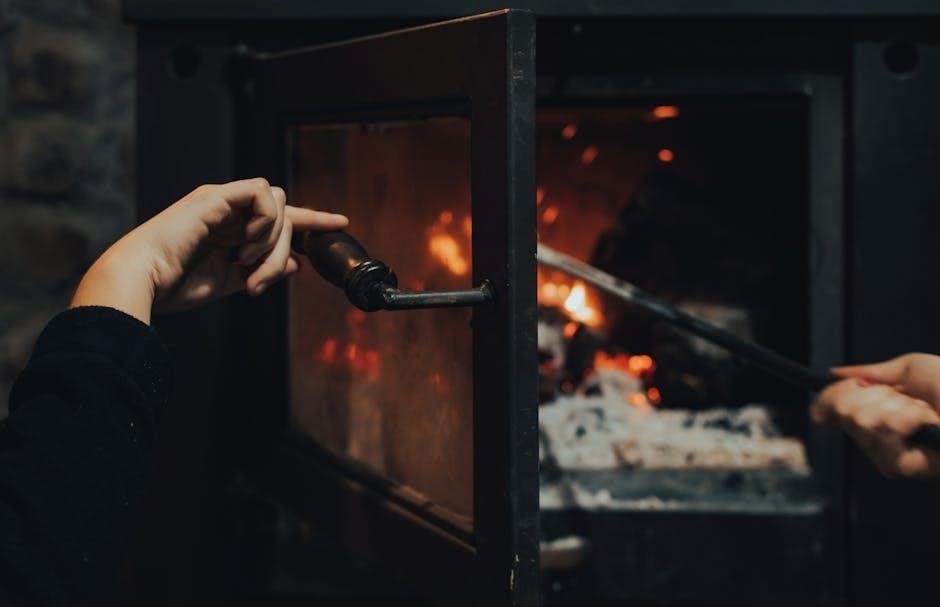
Design and Functionality Differences
Striker-fired pistols with manual safety integrate traditional controls into modern designs, offering shooters a familiar interface while maintaining reliability and performance in various shooting conditions․
4․1 Trigger Systems in Striker-Fired Pistols
Striker-fired pistols feature a trigger system designed for reliability and safety, often incorporating passive mechanisms like trigger safeties to prevent accidental discharge․ These systems ensure the striker is only released when the trigger is fully pressed, enhancing safety․ Some models include manual safeties, adding an extra layer of control․ The trigger pull is typically consistent, offering shooters predictable performance․ This design balances user-friendliness with robust safety features, making striker-fired pistols versatile for both novice and experienced shooters․
4․2 Ergonomics and User-Friendliness
Striker-fired pistols with manual safety are designed with ergonomics in mind, offering a comfortable grip and intuitive controls․ The manual safety provides an additional layer of control, appealing to shooters who prefer a tactile safety option․ These pistols often feature textured grips and contoured frames, enhancing handling and reducing fatigue during extended use․ Their slim profiles and balanced weight make them suitable for concealed carry and versatile for both professional and civilian use, ensuring a user-friendly experience․
4․3 Integration of Manual Safety in Modern Designs
Modern striker-fired pistols seamlessly integrate manual safety features without compromising their sleek, ergonomic designs․ These safeties are often ambidextrous and low-profile, allowing for smooth operation without interfering with the shooter’s grip or draw․ Many manufacturers now incorporate manual safeties into their models, offering users the choice between traditional and modern safety mechanisms․ This integration ensures that pistols remain both functional and aesthetically pleasing, catering to diverse shooter preferences while maintaining reliability and performance․

Safety Mechanisms in Striker-Fired Pistols
Striker-fired pistols employ a combination of passive and active safety mechanisms, including trigger safeties and internal firing pin blocks, to prevent accidental discharge and ensure reliability․
5․1 Passive vs․ Active Safety Features
Striker-fired pistols often incorporate both passive and active safety features․ Passive safeties, like trigger safeties, automatically prevent accidental discharge without user intervention․ Active safeties, such as manual thumb safeties, require deliberate engagement to ensure the pistol does not fire․ Passive systems rely on internal mechanisms, while active systems add an extra layer of control; Together, these features enhance safety, providing redundancy and peace of mind for users, especially in high-stress situations․
5․2 Role of Manual Safety in Preventing Accidental Discharge
Manual safety on striker-fired pistols acts as a physical barrier, preventing accidental discharge by blocking the trigger or firing mechanism․ This feature ensures the pistol cannot fire unless the safety is intentionally disengaged, reducing the risk of unintended discharge․ While modern striker-fired pistols often rely on internal safeties, the manual safety provides an additional layer of control, offering peace of mind for users who prefer an extra failsafe, especially in high-stress or unconventional carry situations․
5․3 Redundancy and Reliability of Safety Systems
Striker-fired pistols with manual safety incorporate multiple layers of redundancy, enhancing reliability․ These include internal passive safeties, trigger blocks, and the manual safety itself․ Such redundancy ensures that even if one mechanism fails, others remain to prevent accidental discharge․ This dual-system approach provides shooters with heightened confidence in their firearm’s reliability, making it safer for carry and use in various environments․ The combination of internal and manual safeties maximizes safety without compromising functionality․

The Debate on Manual Safety in Striker-Fired Pistols
The debate on manual safety in striker-fired pistols centers on its necessity, with proponents emphasizing added security and critics arguing it introduces complexity and potential hazards․
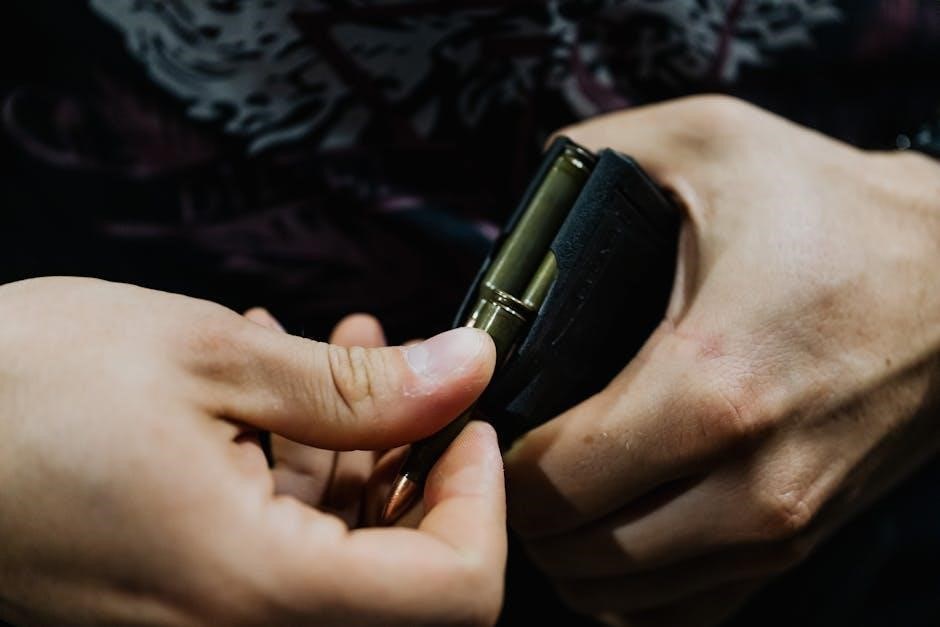
6․1 Arguments in Favor of Manual Safety
Proponents argue that manual safety provides an additional layer of control, enhancing security, especially during high-stress situations․ It offers peace of mind for users who prefer an extra failsafe․
6․2 Arguments Against Manual Safety
Critics argue that manual safety can be a liability, as it may be forgotten in high-pressure situations, potentially leading to failure to engage the weapon․ Additionally, it adds complexity and can interfere with the firearm’s sleek design, making it less intuitive for some users․ Others believe modern striker-fired pistols already have sufficient internal safety mechanisms, rendering the manual safety redundant and unnecessary․ This debate highlights differing priorities between added security and operational simplicity․
6․3 Industry Trends and User Preferences
The firearms industry has seen a shift towards striker-fired pistols without manual safety, driven by consumer demand for simplicity and ease of use․ Many manufacturers now offer models with or without manual safety to cater to diverse preferences․ Some users prefer the added security of a manual safety, while others prioritize streamlined designs and unobstructed operation․ This dichotomy reflects evolving shooter needs and the balance between traditional safety features and modern design philosophy․ Market trends indicate a continued focus on versatility․
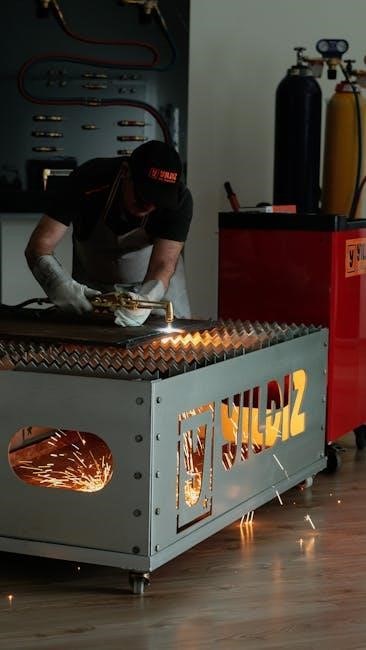
Shooting Performance and Handling
Striker-fired pistols with manual safety deliver consistent performance, blending accuracy and reliability․ The manual safety enhances control without compromising handling, making them versatile for both defense and sport shooting․
7․1 Trigger Pull and Accuracy
Striker-fired pistols with manual safety often feature a crisp, consistent trigger pull, enhancing accuracy․ The manual safety adds a layer of control without compromising the pistol’s handling․ Modern designs ensure that the trigger mechanism remains smooth, allowing shooters to maintain precision․ The combination of a predictable trigger and the added security of a manual safety makes these pistols versatile for both defensive and competitive shooting scenarios, where accuracy and reliability are paramount․
7․2 Effect of Manual Safety on Shooting Dynamics
The manual safety on striker-fired pistols adds an extra layer of control, potentially altering shooting dynamics․ Engaging the safety creates a deliberate action, which can enhance situational awareness but may slightly delay response times in high-stress scenarios․ While it offers an additional safety net, its presence requires shooters to develop muscle memory for quick engagement and disengagement․ This balance between security and speed must be weighed, as it can influence performance in both competitive and defensive shooting environments․
7․3 Comparing Performance Across Different Models
The performance of striker-fired pistols with manual safety varies across models, influenced by trigger systems, ergonomics, and safety features․ For instance, the Smith & Wesson M&P with a manual safety offers a crisp trigger pull and intuitive design, while the SIG Sauer P320 provides a modular platform with optional safety․ Some models prioritize slim profiles for concealed carry, while others emphasize durability for tactical use․ Comparing these dynamics helps shooters choose the best fit for their needs, balancing accuracy, reliability, and user preference․
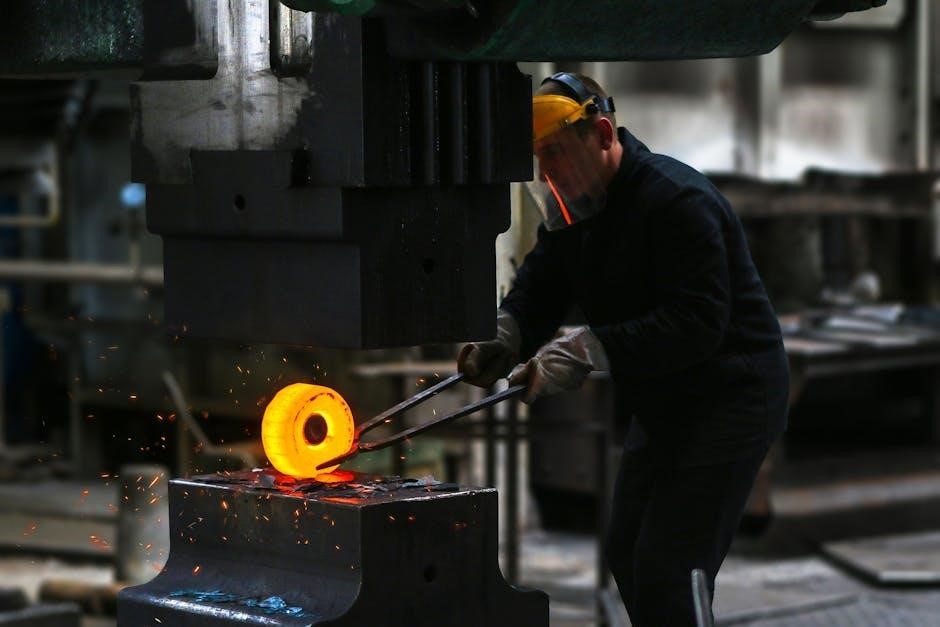
Practical Considerations for Users
Proper carrying methods, regular maintenance, and training are essential for safe and effective use of striker-fired pistols with manual safety, ensuring reliability in real-world scenarios․
8․1 Carrying and Concealing Striker-Fired Pistols with Manual Safety
Carrying striker-fired pistols with manual safety requires careful selection of holsters and techniques to ensure both accessibility and security․ Users should opt for holsters that retain the pistol securely, preventing accidental discharge while allowing easy draw․ Concealment methods vary, with inside-the-waistband (IWB) and outside-the-waistband (OWB) options being popular choices․ Proper training on drawing and reholstering is crucial to avoid mishaps․ Additionally, understanding local laws regarding concealed carry is essential for legal compliance․ Regular practice enhances muscle memory and ensures safe handling․
8․2 Maintenance and Upkeep Tips
Regular maintenance ensures the reliability and longevity of striker-fired pistols with manual safety; Field stripping for cleaning and lubricating key components like the striker and trigger mechanism is essential․ Pay attention to the manual safety lever, ensuring it operates smoothly without obstruction․ Inspect for wear on safety components and replace them as needed․ Proper lubrication prevents friction and enhances functionality․ Additionally, cleaning the barrel and slide regularly prevents residue buildup, maintaining accuracy and performance․ Always follow manufacturer guidelines for specific maintenance requirements․
8․3 Training and Familiarization with Manual Safety
Proper training with striker-fired pistols equipped with manual safety is crucial for safe and effective use․ Shooters must practice engaging and disengaging the safety mechanism to build muscle memory, ensuring it becomes second nature during high-stress situations․ Regular drills, such as drawing from a holster and manipulating the safety, enhance proficiency․ Neglecting to train with the manual safety can lead to accidental discharges or delayed responses in critical moments․ Always emphasize safe handling and adherence to firearm safety protocols during training sessions․

Legal and Ethical Implications
Legal and ethical considerations surround striker-fired pistols with manual safety, emphasizing adherence to firearm laws and responsible ownership to prevent misuse and ensure public safety․
9․1 Legal Requirements and Regulations
The legal landscape for striker-fired pistols with manual safety involves compliance with federal, state, and local firearm laws․ These regulations often mandate background checks, age restrictions, and specific safety features․ Manual safety mechanisms may influence legal requirements, as some jurisdictions require firearms to include such features to ensure public safety․ Additionally, liability concerns arise, as manufacturers must adhere to stringent standards to avoid legal repercussions․ Compliance with these regulations ensures lawful possession and use of striker-fired pistols with manual safety mechanisms․
9․2 Ethical Responsibility of Firearms Ownership
Owning a striker-fired pistol with manual safety carries significant ethical responsibilities․ Firearms owners must prioritize safe handling, storage, and use to prevent accidents or unauthorized access․ Ethical ownership involves adhering to moral principles, such as using the weapon only when necessary and minimizing harm․ Additionally, owners are ethically obligated to ensure proper training and familiarity with the firearm’s features, including the manual safety․ This responsibility extends to respecting legal norms and prioritizing the safety of others in all situations․
9․3 Liability Concerns with Manual Safety Features
The inclusion of manual safety features in striker-fired pistols raises liability concerns, particularly in cases of accidental discharge or misuse․ While the safety mechanism is designed to prevent unintended firing, failure to engage it properly can lead to legal repercussions․ Owners may face liability if negligence results in harm, emphasizing the importance of proper training and adherence to safety protocols․ Manufacturers must also ensure reliable functionality to avoid potential lawsuits tied to design flaws․
Striker-fired pistols with manual safety offer a balance of reliability and user control, with ongoing innovations likely to enhance safety and functionality, meeting diverse shooter preferences․
10․1 Summary of Key Points
Striker-fired pistols with manual safety blend modern design with traditional control, offering shooters enhanced security and versatility․ These firearms have evolved historically, incorporating manual safety features to prevent accidental discharge while maintaining reliability․ Design innovations, such as ergonomic triggers and integrated safeties, cater to diverse user preferences․ The debate surrounding manual safety highlights its pros and cons, with some emphasizing added control and others prioritizing streamlined operation․ As the industry advances, future designs may further refine safety and functionality, adapting to shooter demands and technological progress․
10․2 Future Trends in Striker-Fired Pistol Design
Future striker-fired pistols with manual safety are expected to integrate advanced ergonomic designs, modular components, and innovative safety mechanisms․ Manufacturers may adopt adaptive trigger systems and enhanced materials for durability․ Smart pistol technologies, such as biometric safeties, could become more prevalent, offering personalized security․ Additionally, designs may focus on slim profiles for concealed carry while maintaining reliability․ These trends aim to balance functionality, safety, and user preference, ensuring striker-fired pistols remain versatile and reliable for diverse shooting needs and preferences․
10․3 Final Thoughts on Manual Safety in Modern Pistols
Manual safety in striker-fired pistols remains a debated yet valuable feature, offering an additional layer of control for users who prioritize it․ While some argue it introduces complexity, others appreciate the peace of mind it provides, particularly in high-stress scenarios․ As firearms evolve, the integration of manual safety will likely adapt to user preferences and technological advancements, ensuring its relevance in modern pistol design․ Balancing safety, functionality, and user needs will continue to shape its role in the industry․
